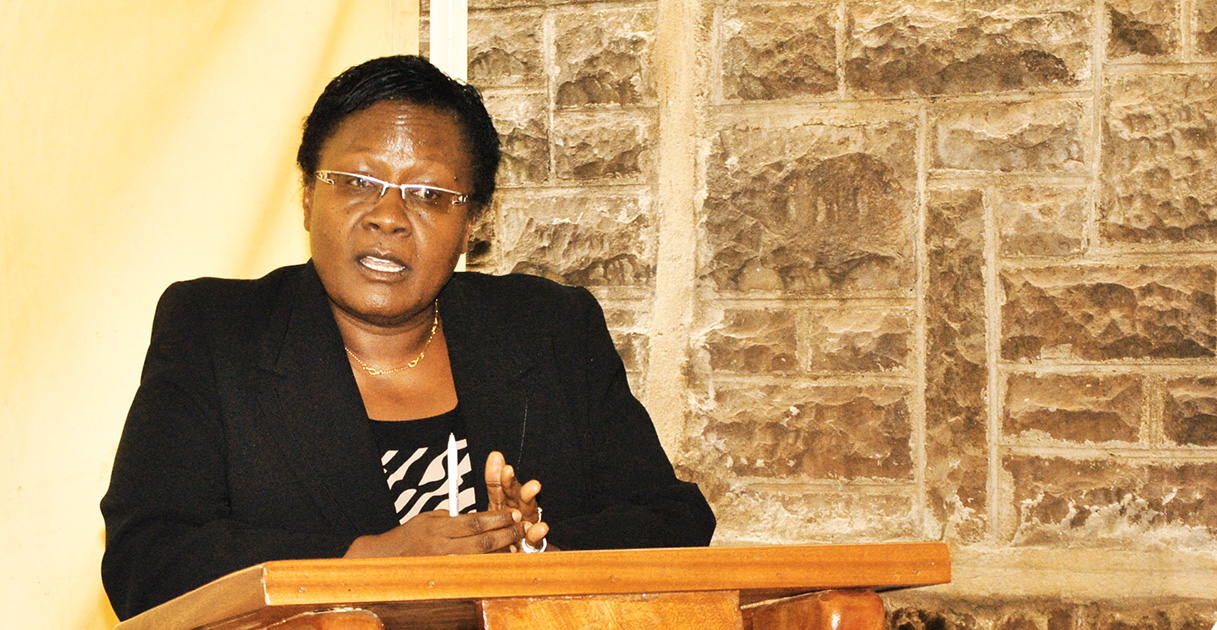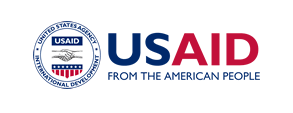The Health Policy Project ended in 2016. Work continued under Health Policy Plus (HP+) until 2022.
NEWS & VIEWS

The Director-General of the NCPD, Dr Josephine Kibaru-Mbae, addresses the guests at the launch.
Patrick Mwangi, Health Policy Project/Kenya
NAIROBI, Kenya—Kenya has launched a new planning model that the government can use to analyze socio-economic benefits accruing from better population management.
The Demographic Dividend model (DemDiv model) was launched at an event attended by government officials and partners and representatives of agencies working in the health and economic sectors. It has been pilot-tested in the country in a project led by the National Council for Population and Development (NCPD), and funded by United States Agency for International Development (USAID) through the Health Policy Project.
The model provides useful guidance for the national government and the counties in economic and population planning, and helps to identify optimum opportunities for increased economic growth arising due to changes in the structure of the nation’s population. A demographic dividend is a boost in economic growth promoted by having a larger working-age population that occurs naturally following lower mortality and fertility rates. As fertility rates fall and the proportion of working-age adults rises, a country can achieve economic growth and productivity, raising incomes and allowing families and governments to invest more in the health, education, and well-being of future generations.
In Kenya, it is estimated that every 100 working-age adults support 81 dependents, which limits the amount of income families are able to save and invest. Additionally, Kenya’s low gross domestic product (GDP) per capita of US$900 has contributed to increased family poverty and economic inequalities. To achieve its vision of middle-income status by 2030, Kenya needs to promote social and economic investments that will promote a more balanced age structure.
At the launch meeting today, the Chairman of the Parliamentary Committee on Health, Dr. Rachel Nyamai, said that efforts must be made to reduce the population growth rate and change Kenya’s age structure so that the country has more people in the working age supporting fewer dependents. This can be achieved by making investments in family planning promotion and services to help the country achieve a national contraceptive prevalence rate of 70 percent by 2050, reducing the number of children per woman to 2.1.
Kenya also needs to promote education opportunities for girls to enable them to complete secondary school or to stay in school until they are at least 16 years old. Currently, transition to secondary school for girls is poor, and adult women on average have only completed 5.4 years of education. Increasing education for girls will increase empowerment and enable them to make healthy reproductive choices.
The country also needs to increase investments to spur economic growth by supporting domestic industries, improving market efficiency and strengthening governance of public institutions to raise GDP per capita twelvefold by 2050.
Karen Freeman, the USAID Mission Director in Kenya, said that the launch of the model in Kenya marks a milestone in the 50-year partnership USAID has with the Government of Kenya, and of their support to the Kenyan people.
Kenya can benefit from the demographic change through smart policies and smart investments, and family planning should play an important role in achieving Vision 2030, said Ms. Freeman. “Our 50-year partnership is built not only on our commitment to work together, but also on our ability to share ideas and resources, like DemDiv, that help us meet the great challenges of our time.”
Dr. Josephine Kibaru-Mbae, the Director-General of the NCPD, said that the DemDiv model will help Kenya to achieve its 2030 goals, and attain and maintain its desired GDP. Stephen Wainaina, the Economic Secretary in the Ministry of Planning and Devolution, told participants that the government is looking for innovative approaches to slowing down the population growth, recognizing that the high population has crippled economic development. He said the Demographic Dividend model will help the government to achieve proper policies that can improve the quality of life for Kenyans.
The Demographic Dividend model was developed by Futures Group and Kenya represents its first pilot application. The Health Policy Project is promoting the use of the model in Kenya in national and county planning and budgeting “so that national and county governments can allocate enough resources for family planning,” said Stephen Muchiri, the Director of the Health Policy Project in Kenya.
For more information on Kenya results from the DemDiv model, see http://www.healthpolicyproject.com/index.cfm?ID=publications&get=pubID&pubID=384
For more information on DemDiv, see http://www.healthpolicyproject.com/index.cfm?id=topics-DemographicDividend
For more information on Health Policy Project/Kenya, see http://www.healthpolicyproject.com/index.cfm?id=country-Kenya
What's New
- Something to Build On: “Innovation Exchange” Celebrates the Health Policy Project’s Close and a New Beginning
- What Will it Take for Tanzania to Achieve ART Targets and Ensure Long-Term Sustainability of the HIV Response?
- Helping Kenya’s County Leaders Advocate for Increased Health Investments
- HPP Holds Working Meeting on Ensuring Responsible PEPFAR Transitions for Key Populations
- Health Policy Project Celebrates 2016 International Women's Day
- HPP Staff Participate in White House Conference on HIV Stigma Reduction

